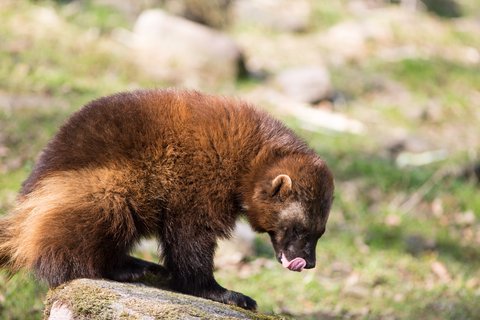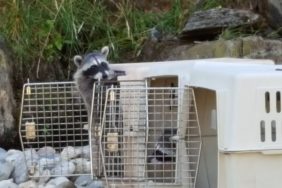You’re lost, trapped in the snow, desperate. You hear a sound, hopes soar, and out of the mist comes . . . a wolverine.
Are you screwed? Not necessarily.
Animal trainers at the Alaska Wildlife Conservation Center — a nonprofit facility south of Anchorage, Alaska — want to breed wolverines and train them as search and rescue animals.
Wolverines as rescue animals? Who thought that up, and how do they get their pants on in the morning? Cojones grande.
ALSO READ: First Wolverines Confirmed in North Dakota Since 1850s
Wolverines don’t get as much press as bears, mountain lions and wolves, but they can be really nasty characters. Nobody buys their daughter a stuffed wolverine for her birthday.
The wolverine is one of Alaska’s most elusive animals, with an almost mythical reputation for fierceness and cunning behavior. Could this creature, often feared and not fully understood, really help aid in search and rescue missions?
The Conservation Center thinks so. The nonprofit organization believes that wolverines would be especially good at locating and rescuing people buried by avalanches in Alaska’s backcountry.
“It does sound, probably, far-fetched, but the reality is this kind of training is actually being done all over the world in different projects,” said Chandelle Cotter in an interview with Alaska Dispatch News.
She works with the center’s male wolverine, Kasper, every day. Kasper already made headlines by nearly escaping from a New Jersey airport while being transported.
Not everyone is buying it.
“Given the fear the public has of wolverines and the belief they are more aggressive than bears, I’m not sure this idea will be well-received by the public,” said Alaska State Troopers spokesperson Tim DeSpain about the center’s plans.
Troopers are responsible for coordinating search and rescue on land in Alaska, except in federal parks. Still, wolverines have characteristics that would appear to make them good candidates for search and rescue missions.
As weasels, they are smart. Often they travel across mountain ridges in search of carrion buried beneath avalanches, and they “have an incredible ability to smell things under the snow,” said Howard Golden, a wildlife biologist with the Department of Fish and Game who has extensively researched the animal.
The animals range from 20 to 40 pounds, and are opportunistic eaters, scavenging often and constantly searching for food. A wolverine can travel up to 30 miles in a day with relative ease.
The program is in its infancy. Will Wolverines replace burly Saint Bernard’s wearing beer kegs? Only time will tell, but inquiring minds want to know.
© Andreas Altenburger | Dreamstime.com – Wolverine, Gulo gulo








